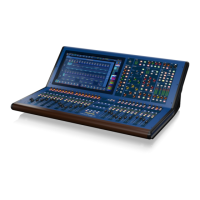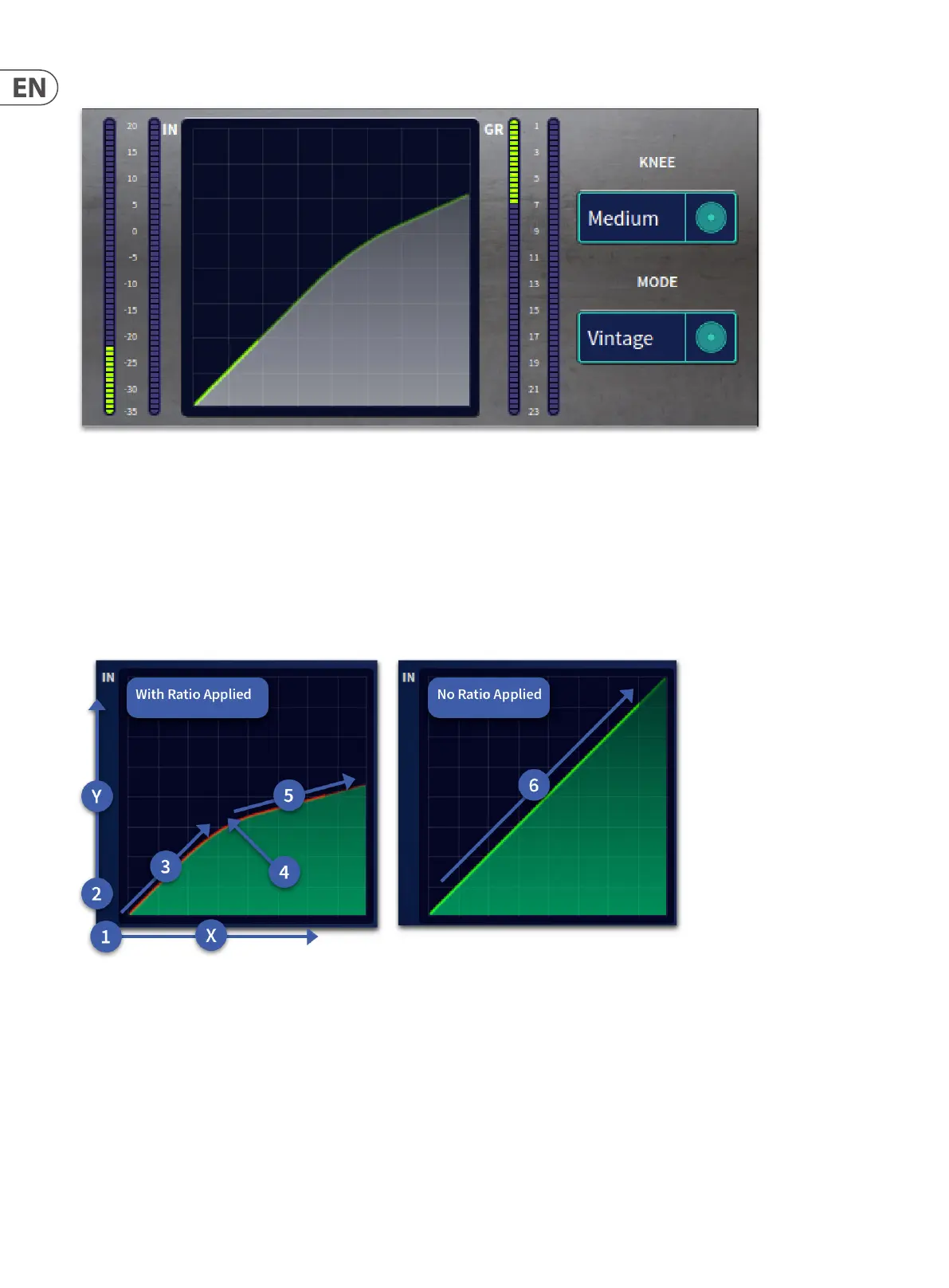262 HD96-24-CC-TP User Manual
Vintage mode (adaptive peak - bright)
This is a peak sensing compressor with a partially adaptive nature. It produces extremely subtle attack and release curves during the onset of compression that are
largely independent of the envelope control settings. However, as it is driven harder, that is, signals are further over-threshold, the attack and release times become
more aggressive and gradually return to manual control so that the operator can optimise the capture (or otherwise) of larger transients etc. The peak sensing
algorithm intentionally increases harmonic overtones during compression, which adds a tube or valve-like brightness and sparkle to the signal, producing extremely
natural and lively sounding compression of acoustic instruments.
Compressor Graph
This section uses examples to illustrate the eect on the compressor graph of adjusting the compressor’s parameters.
Ratio
The following diagram shows a signal on the compressor graph with ratio applied; it shows the point of threshold and how ratio aects the gradient of the signal
following this. The graph on the right shows an uncompressed signal, that is, with no ratio applied.
1. Input level. The ‘x-axis’ of the graph.
2. Output level. The ‘y-axis’ of the graph.
3. This portion of the graph is pre-threshold and is unaected by compression, that is, with a gradient of 1:1.
4. This portion of the graph is post-threshold and shows the eects of compression. The gradient is the same as the compression ratio.
5. Threshold, the point where the gradient changes and where compression starts to be applied.
6. Graph with no ratio applied, that is, 1:1 gradient. No eect on audio.

